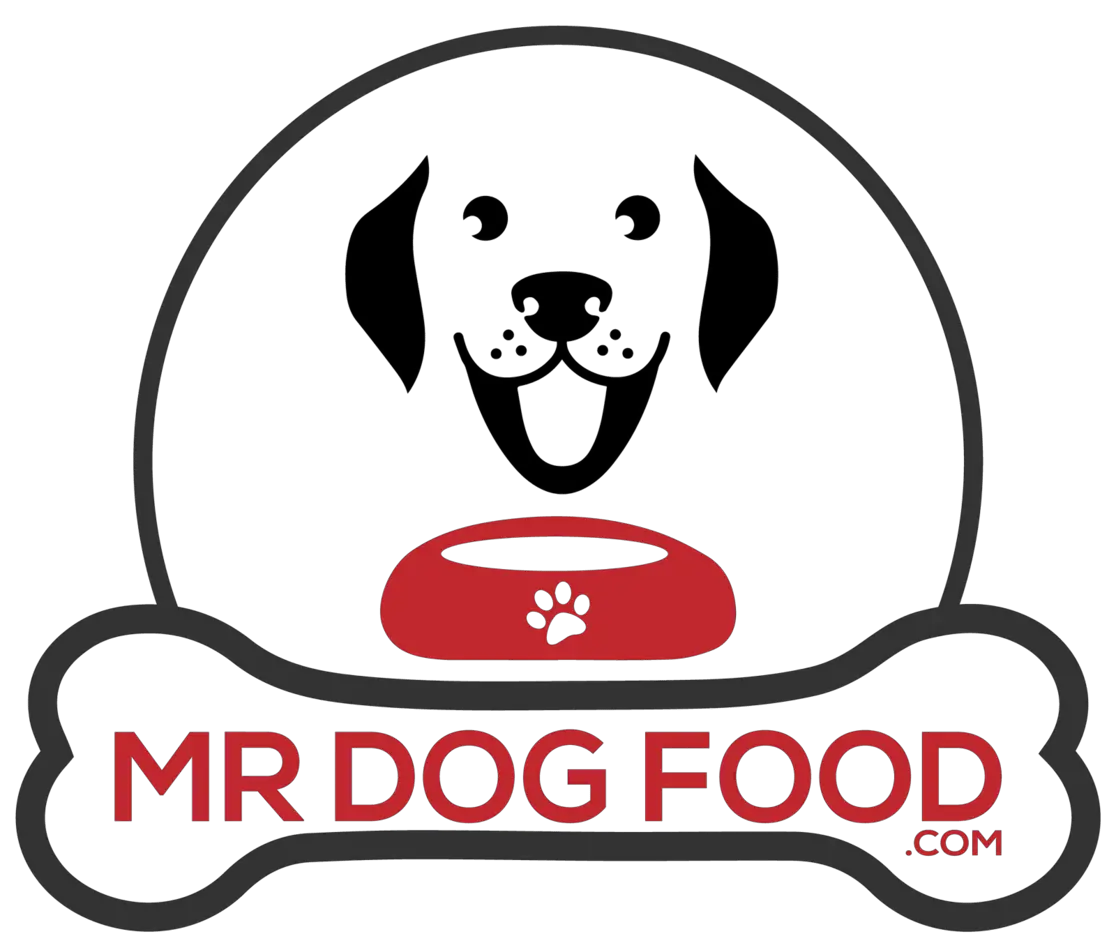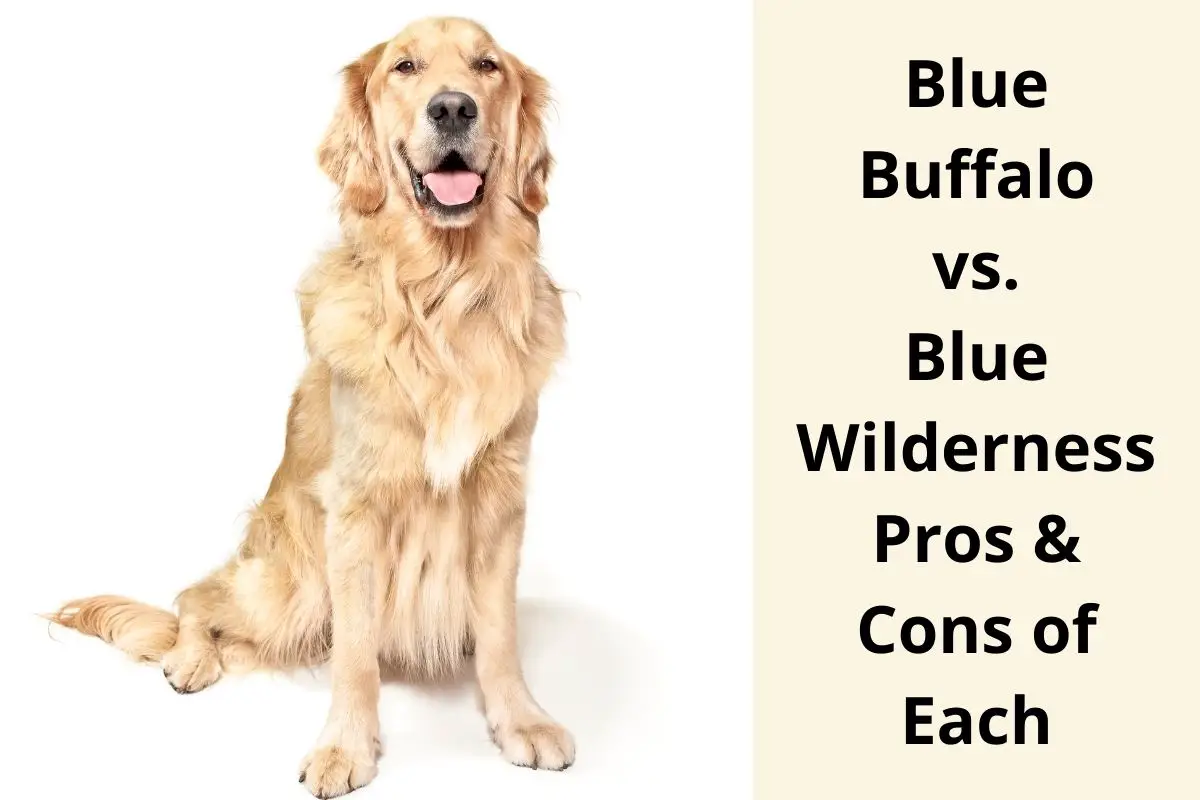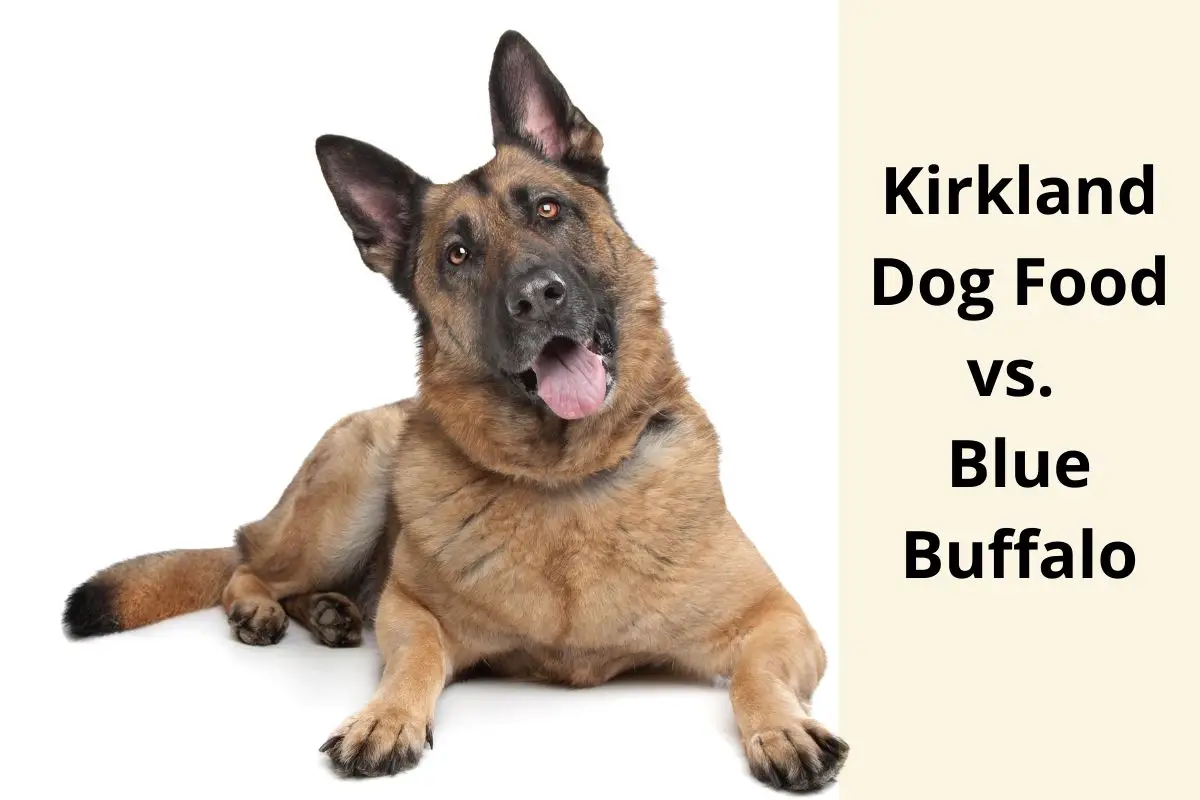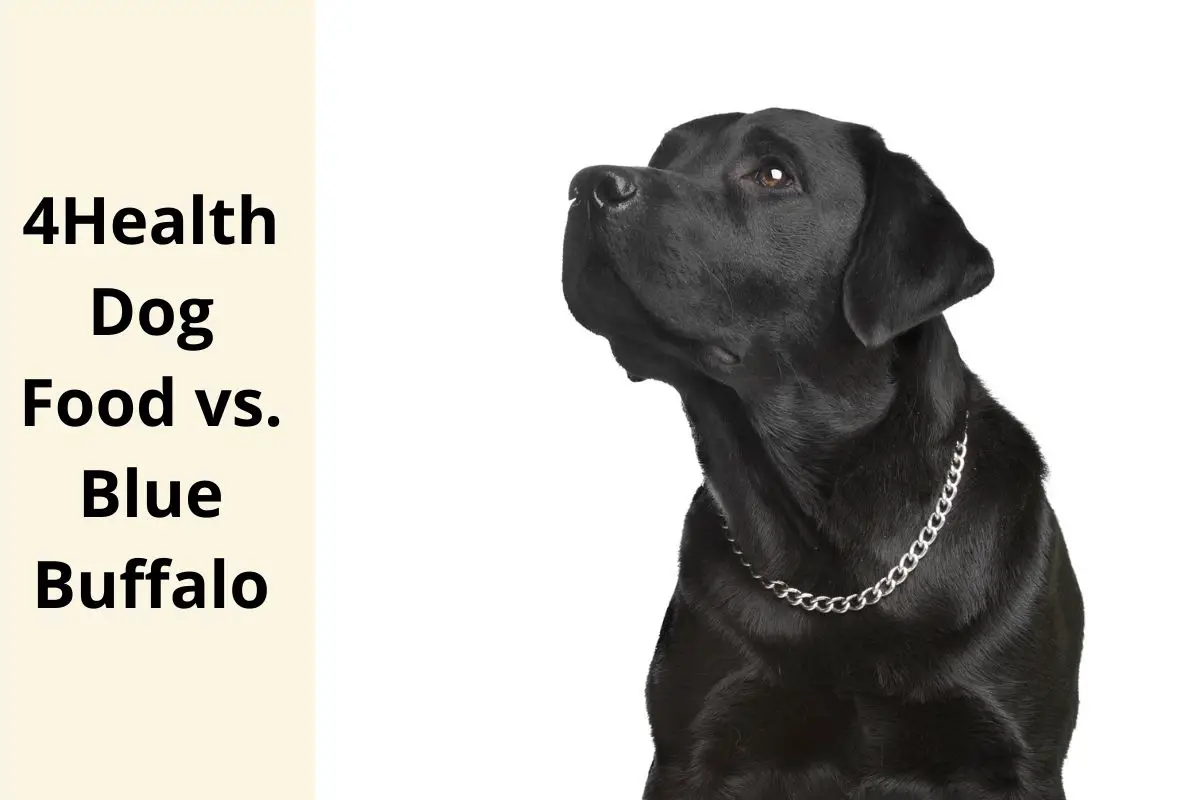This post contains affiliate links.
Grain-free dog food has become the new trend nowadays. Everybody is talking about how grains are harmful and why it’s better to get rid of them. But as a responsible pet owner, do you really need to feed your dog a grain-free diet to help her thrive?
The main benefit of grain-free dog food is that it provides more energy and is helpful for dogs with food allergies, but it is also costlier and unsuitable for older pets. Conversely, a grain-inclusive diet is affordable and just as nutritious, but there are several misconceptions surrounding it.
In this article, we’ll look at the pros and cons of each of these foods. After dispelling some myths and discussing everything you need to know, we’ll decide whether a grain-free diet is better than a grain-inclusive one.
Table of Contents
All About Grain-Free Dog Food
Any dog food that does not contain wheat, corn, oats, barley, rice, or other grains is known as grain-free dog food. The idea of grain-free food has some roots in humans opting for a gluten-free diet. Vegetarians and vegans often want their dogs to be the same. Somewhat similarly, health-conscious dog owners want to switch to grain-free dog food since everybody talks about grains’ harmful effects.
It’s important to distinguish between grain-free and gluten-free as they’re not the same. Gluten-free foods do not include gluten-containing grains like barley, wheat, and rye. They do, however, have other grains like oats and buckwheat.
By contrast, grain-free dogs do not include any grains. They’re also gluten-free unless they have ingredients that are hidden sources of gluten.
Pros of Grain-Free Dog Food
Now that you know what a grain-free diet is, it’s time to talk about some of its advantages. There may be several benefits of grain-free dog food such as shinier coat, compact stools, and improved breath. However, they don’t fully justify its higher price.
There are also a few benefits related to medical issues in dogs. Let’s discuss how grain-free dog food ingredients can be better than grain-inclusive dog food in certain conditions.
Note that the following benefits aren’t universal, meaning a grain-free diet usually only helps your dog in specific situations (which we’ll discuss below).
Helps Overweight or Obese Dogs
According to the 2017 State of Pet Health Report, every 1 in 3 dogs is overweight in the United States. Obesity has become one of the most common health problems for dogs. Pups with overweight issues may benefit from switching to a grain-free diet. It can provide them the same amount of energy with fewer carbohydrates.
Now, dry grain-free dog foods don’t necessarily have fewer carbs than grain-inclusive food. Dry dog food needs a starchy carbohydrate source to act as a binding agent and help form hard kibble. So even though there are no grains, other ingredients are used to fulfill the carb requirement. The carbs in a grain-free diet are usually sweet potato, garbanzo beans, or pea protein, which are healthier than corn or wheat.
Also, wet dog food can contain fewer carbohydrates and be high in protein. So it’s a better choice if you want to lower your dog’s carb intake, but it’s also more expensive.
Can Be Easier to Digest
Even though dogs have evolved to digest grains, some adult dogs may still have problems digesting them. This is especially true if they don’t have enough amylase enzyme, which is very important for breaking down carbs and starch to simpler sugar compounds. A lack of this necessary enzyme can lead to impaired ability to digest grains.
If these dogs with digestive issues are fed a grain-inclusive diet, it can cause numerous gastrointestinal problems in them. Grain-free dog food can be extremely useful in this situation as it’s easier to digest and contains all the necessary nutrients.
Provides More Energy
Cheaper grain-inclusive dog foods are packed full of processed grains. In this process, the outer layers of individual grains are mechanically removed to enhance their taste, color, and texture. The downside is that much of the fiber content is also removed in this process. This means your pet’s body will use the grains’ energy quickly, and your dog’s blood sugar levels will rise and fall just as quickly.
On the other hand, grain-free dog foods don’t have as much of these easily digestible carbs. This means your pet will have more energy by eating the same amount of food.
Helps Diabetic Dogs
Foods rich in simple carbohydrates may raise blood sugar levels of dogs with diabetes. Some grains also have higher levels of glucose, challenging the insulin levels in diabetic dogs. Additionally, the lectin and gluten present in some grains have been found to trigger inflammation (not all grains cause inflammation, though).
For these reasons, if your dog is diabetic, she may benefit from a grain-free diet. Make sure to consult your vet to get an expert opinion on how and if you should go about changing your diabetic pup’s diet.
Suitable for Pets With Food Intolerance
Although the number of dogs allergic to grains or gluten is minuscule, a grain-free diet can be very beneficial if your pet is one of them. For allergic dogs, grains such as wheat or oats can damage the small intestinal lining and impair their ability to absorb nutrients.
Here are some symptoms of food allergies:
- Skin rash
- Itching, licking, or biting the skin
- Excessive gas
- Vomiting
- Constipation
- Loose stool
If your dog is experiencing any of these symptoms, talk to your vet, and make sure she doesn’t have any severe disease. Once you’ve ruled that out, gradually change your dog’s diet to a grain-free one. Grain-free dog food can be very suitable for such a dog as it’ll provide her carbohydrate from sources other than grains.
Cons of Grain-Free Dog Food
Grain-free foods are often promoted as the ultimate diet that contains everything your pet needs, but it has its disadvantages. Just as there are benefits to grain-free dog food, there are some cons as well. These are things you should consider before switching to a grain-free diet for your pet.
Not Suitable for Older or Less Active Dogs
A grain-free diet has high protein content and provides more energy. This is excellent for working and highly energetic dogs, but it may not suit every pooch out there. Depending on the activity level and age of your dog, her protein needs will vary. Hunting dogs, search and rescue dogs, or sled dogs need a lot of energy and protein than dogs who don’t exercise that much.
When dogs are injured or sick, extra protein can help them recover faster. Also, larger breeds usually have a higher demand for protein to keep their muscles at optimal conditions. As dogs grow older, their protein requirement decreases steadily. They still need it, but not as much as when they were young and energetic.
So if you have an older dog or a dog with a sedentary lifestyle, grain-free dog food is not the best choice.
More Expensive
Grain-free dog foods derive most nutrients from animals. Understandably, they cost more than regular grain-inclusive dog foods. This means feeding a grain-free diet can be costly, especially if you have multiple four-legged friends in the house.
The cost of a grain-free diet can be a deal-breaker if your dog is doing fine on a grain-inclusive one. Some people argue that grain-free food contains more energy and protein, which means your dog will eat less but get the same amount of nutrition.
Still, if she doesn’t fall in any of the categories described in the last section, switching to a grain-free diet is just wasting your money. You won’t be saving any visits to the vet because, well, your dog is doing fine eating grain.
Grain-Free Is Not Carbohydrate-Free
Are you worried about your pet’s weight and want to reduce her carb intake? Well, you’re only partially in the right place. Dry grain-free foods contain just as much (or even more) carbohydrate as grain-inclusive foods. Most grain-free dog foods use potatoes, peas, or legumes to make up for wheat or corn. So, you usually won’t be cutting carbs by switching to a grain-free diet.
With that said, some carbs used in grain-free food are better options than your regular dog food because they’re healthier.
Dry dog food requires starch to bind it together and form hard kibble. If there were no binding agent, the bag would be filled with dog food dust. So grain-free dog foods need to have another source of carbohydrate to get the same kind of kibble.
However, wet grain-free dog foods can have fewer carbs and higher protein, which is a better option if you’re aiming for weight loss.
So it’s not that grain-free food cannot be useful for weight loss; it’s just that you need to consider your dog’s needs. You must also carefully read the ingredients and nutrients written on the food you’re about to buy.
Best Grain-Free Dog Foods
If you have an allergic dog, merely getting a grain-free dog food may not work for you. As we’ve discussed, wheat is just one of the most common allergens. So if you’re looking for a grain-free or gluten-free diet, you should also look for beef—and chicken-free diet.
Taste of The Wild is a famous dog food brand that knows how to create a hypoallergenic diet for our pets. It’s a unique grain-free formula that has thousands of satisfied customers all over the world.
- Wetlands Grain-Free Food: For adult dogs, I recommend Wetlands Grain-Free Food. It derives most of its protein content from duck and duck meal. The guaranteed analysis on the package tells us that it has 32% protein and 18% fat. With optimal levels of omega fatty acids, this dog food provides all the essential nutrients for dogs throughout their lives.
- High Prairie Grain-Free Food: For puppies, I suggest you go with High Prairie Grain-Free Food. It’s from the same trusted brand, but it’s a different recipe for puppies. The packaging claims that it has 28% protein and 17% fat. The majority of its animal protein comes from buffalo and lamb meal. And just like the Wetlands recipe, it is packed with complete nutrition for maximum growth of your pup.
All About Grain-Inclusive Dog Food
Grain-inclusive dog food is simply the regular kibble available at the stores. These dog foods commonly contain one or more of the following grains:
- Wheat
- Rice
- Corn
- Soy
- Oats
- Barkley
- Rye
Grain-inclusive dog food has been around for a long enough time to know that it is a reliable source of complete, balanced nutrition for our pets. If you have a dog, odds are, you’ve already been feeding her food containing grains.
Pros of Grain-Inclusive Dog Food
Grains contribute protein and small amounts of vitamins and minerals to a dog’s diet. And unlike grain-free dog food, you can feed grain-inclusive food to all kinds of dogs. Let’s look at some advantages of a grain-inclusive diet when compared with a grain-free one.
Affordable
The most evident benefit of choosing a grain-inclusive diet is its affordability. Grains are an inexpensive source of calories and other nutrients. It’s possible to feed your dog dry, kibbled food for less than a dollar per day.
Also, if you decide to cook food for your pooch, including grains like oats and rice is an excellent idea to make the recipe more affordable. That way, you’ll be able to feed your dog home-cooked, inexpensive food that’s still better than regular, commercial dog food.
Lots of Choices Available
Another convenient fact about grain-inclusive food is that it’s more available than grain-free food. There are lots of flavors, brands, and varieties available for dog foods containing grains. Smaller convenience stores probably won’t be able to provide the same variety for grain-free foods.
Nutritional Profile
A grain-inclusive diet contains an excellent mixture of ingredients that combine to provide complete nutrition to your dog. If we talk specifically about grains, they’re an excellent source of carbohydrates, protein, and other nutrients.
Take corn as an example. Corn gluten meal contributes over 60% protein to your dog’s diet. It provides three times more protein than chicken and contains a variety of antioxidants and vitamins. Plus, it also has fatty acids for a healthy coat, skin, and strong immunity.
Lastly, grain-free dog foods often lack enough fiber content, while fiber is found in adequate quantities in grains.
Cons of Grain-Inclusive Dog Food
If we talk about the disadvantages of grains in dog food, there aren’t many. Usually, dogs eat grains, and their digestive system makes use of them just like other ingredients. That’s all there is to it.
Now, you might be thinking, “Wait, aren’t grains hard to digest for dogs? Aren’t some dogs allergic to them? What about the fact that grains are used as fillers that have no nutritional value? Oh, and surely genetically modified grains are harmful to dogs. They cause a terrible disease known as leaky guts. You really need to research your articles before you begin spreading misinformation.”
Hate to break it to you, but most of that is just false marketing designed to make you buy expensive dog food. Being a responsible pet owner, you mustn’t get tricked into these things.
There are many such theories about grains and how they do more harm than good, but most of them are false. So let’s fact-check the common misconceptions regarding grain-inclusive dog foods.
Common Misconceptions About Grains in Dog Food
With the arrival of a grain-free diet, companies have marketed misleading information about grains and how they affect dogs. The internet is filled with myths regarding grain-free and grain-inclusive foods for our pets.
Don’t get me wrong; there’s nothing inherently unhealthy about a grain-free diet for dogs. It’s just that I find more and more people switching to it for the wrong reasons. So let’s clear up some of these misconceptions, and then we’ll decide if you should go for grain-free dog food or not.
Dogs Should Eat Like Wolves
Let’s go back to the point in history when there were no dogs, and only their wild ancestors, wolves, existed. A pack of wolves would hunt their prey and feast on protein-rich animal meat. You never see wolves grazing in the field, do you? So the argument in favor of a grain-free diet says that dogs, like wolves, have little ability to digest and absorb grains like wheat and corn.
However, research reveals that the domestication of dogs has led them to develop the ability to digest starch. They are genetically different from wolves, possessing ten essential genes that allow them to absorb nutrients from grains.
Additionally, a grain-free diet is not plant-free. Wheat, oats, rice, quinoa, millet, etc. are just seeds. Instead of using these seeds, grain-free dog food uses other plant sources like peas, carrots, pumpkin, etc. And you’ve never seen a wolf savoring a bite of sweet potato, have you?
If dog food companies claim that dogs are the descendants of wolves and should eat like them, they will contradict themselves by using other plant-based sources in their products.
Grains Are Allergenic
Allergies can be a huge problem for our four-legged friends, but fleas or environmental conditions cause most of them. Only ten percent of all allergies are related to food, and most of them are linked with chicken, beef, eggs, lamb, and dairy.
The good news is that grains are less commonly the target of allergies. To give you an idea, less than one percent of dogs are allergic to grains. And even when they are, it’s only specific grains, such as wheat or corn, that are allergenic, not general categories, such as grains.
If you find that your dog is allergic to wheat or corn, grain-free food can be an excellent choice. Feeding grains to such a dog can be very harmful to her. However, if she has any other allergy (which is more likely), switching to a grain-free diet won’t help that much.
Grains Are Just Non-Nutritive Fillers
Some people believe that grains are simply filler ingredients and have no place in dog food. This isn’t true; grains are an efficient source of carbohydrates, protein, and amino acids. They are also packed with essential fatty acids, minerals, vitamins, and fat.
Although uncooked grains are tough to digest for dogs, properly cooked grains are highly digestible and nutrient-rich. An individual grain can be divided into its components, and those nutrients can be concentrated and used to prepare kibble. So grains are certainly not “just fillers.”
Concerns About Genetically Modified Grains
Some people believe that genetically modified grains (GMOs) are harmful to their pets and cause leaky gut or dysbiosis. It’s a disease in which small cracks develop in the intestinal lining due to inflammation. This allows bacteria and toxins to leak into the bloodstream, leading to several issues like skin rashes, bloating, fatigue, and food allergies.
The fact is that there is no scientific evidence that GMOs cause such disease. According to the FDA, GMOs are also just as nutritious and safe as traditionally bred grains. I recommend you read this article on PetMD to clear any confusion about GMOs.
However, if GMOs still concern you, look for grains like quinoa, buckwheat, barley, oats, millet, etc. Since these are less popular, they’re less likely to be genetically modified.
You can also find GMO-free dog foods that use grains. I recommend Whole Grain Dog Food by The Honest Kitchen. It is free of artificial preservatives, GMOs, wheat, corn, or soy. Instead, the primary ingredient is dehydrated chicken, which contains four times as much protein as fresh chicken. Other components are quinoa, sweet potato, spinach, and parsley.
Best Grain-Inclusive Dog Food
There are many options when it comes to regular dry food for dogs. From cheap, low-quality kibble to premium dog food, you can find everything on Amazon.
- Canidae Premium Dog Food with Whole Grains: For adult dogs, I recommend this. It contains grains such as white rice, brown rice, and millet, and it has chicken meal listed as its primary protein source. Since it’s a premium dog food, it is made with high-quality sources of protein and digestible carbohydrates. Apart from that, Canidae also offers five high-quality recipes to titillate your dog’s taste buds.
- Blue Buffalo Life Protection Formula: For puppies, I recommend Blue Buffalo Life Protection Formula. It contains 26% protein and 17% fat, along with fatty acids and other vital nutrients. Deriving most of its protein from chicken meal, it has various grains like oatmeal, barley, and brown rice. Blue Buffalo also explains why every ingredient is included in the food.
Again, there are a variety of grain-inclusive dog foods in the market. Here, I’ve tried to give you the best recommendation after carefully researching several products’ ingredients.
The Verdict: Grain-Free or Grain-Inclusive?
Ultimately, the choice of food comes down to your—and your dog’s—preference. Now that you know everything about grain-free and grain-based food, you’re in a good place to make an informed decision in this matter.
Think about the common misconceptions we’ve discussed. Are you feeding grain-free foods for one of those reasons? Is your dog otherwise doing well on a grain-inclusive diet? If so, then a grain-free diet is probably a waste of money for you.
If your pet prefers grain-free kibble and you can afford it, there’s no harm in continuing it. But if your pet has no problems with grains, and staying grain-free is digging a hole into your pocket, happily switch back to grains.
Grain-free foods might be worth a shot if your dog shows signs of allergies. But remember that grains are not the only suspect; beef and chicken allergies are more common than wheat allergies.
Of course, it is always best to talk to your vet about your dog’s specific needs. They will help you formulate the best diet for your pet, and you’ll also get the perfect answer to the question: does my dog need a grain-free diet?
Grains are not bad in themselves, nor are grain-free foods. To be honest, none of the ingredients really matter when it comes to dog food; all that matters are the nutrients they contain. If your dog food has protein, it is irrelevant whether that protein comes from plants or animals. As long as your dog’s body gets all the essential amino acids, it will thrive.
Remember that not all grain-free (or grain-inclusive) foods are created equal. Carefully study the list of ingredients and nutrients before buying any dog food. If you don’t have the time to research yourself, you can simply go with the products I’ve suggested above.
Final Thoughts
Grain-free food has become popular recently, and pet owners are reporting healthier coats and better health by using them for allergic dogs. However, these premium grain-free dog foods use ‘exotic’ and unusual protein sources like lamb, kangaroo, and bison.
Since meat and beef allergies are more common than wheat allergies, we can’t be sure if these benefits are because of the lack of grains or the lack of allergenic protein sources.
As I’ve said several times throughout this article, it’s best to consult your vet to see what kind of diet will suit your dog the best. As long as you don’t fall for marketing and monitor your dog’s health, you—and your pet—will be fine.
Sources
- Nature: The genomic signature of dog domestication reveals adaptation to a starch-rich diet
- Pet Coach: Food Allergies in Dogs
- Just Right Pet Food: What You Should Know About Dog Food Ingredients & Grain-Free Diets
- Rover: Grain-Free Dog Food: Is It Always Better, and Which Brands Are Best?
- Just Right Pet Food: Can Dogs Digest Grain?
- PetMD: Is GMO-Free Pet Food Safer than Regular Pet Food?
- American Kennel Club: Can Dogs Eat Wheat and Other Grains?
- Breeding Business: 12 Benefits of A Grain-Free Diet for Dogs
- Zignature: Benefits of Grain-Free Dog Food
- Pet Ponder: Pros and Cons of Feeding Grain-free Food to Your Dog
- Dog’s Best Life: Understand the pros and cons of grain-free dog food
- Best Pets Veterinary Hospital: Pros and Cons of Grains in Dog Food
- PetMD: The Power of Protein
- Purina: Regular vs. Grain-Free Dog Food: Which is Right for Your Dog?
- Just Right Pet Food: Is Plant Protein Good for My Dog?
- Just Right Pet Food: What are Fillers in Dog Food?
- Pet Circle: Exploring Grain Free Dog Food
- Hearthstone Wellness Blog: What You Need to Know About “Fillers” in Dog Food
- Blue Buffalo: Wholesome Ingredients and Their Benefits
- Nature: Dog’s dinner was key to domestication
- Pets.Care: 2017 STATE OF PET HEALTH REPORT REVEALS 1 IN 3 U.S. PETS ARE OVERWEIGHT
Mrdogfood.com is a participant in the Amazon Services LLC Associates Program, an affiliate advertising program designed to provide a means for sites to earn advertising fees by advertising and linking to Amazon.com. We also participate in other affiliate programs which compensate us for referring traffic.




